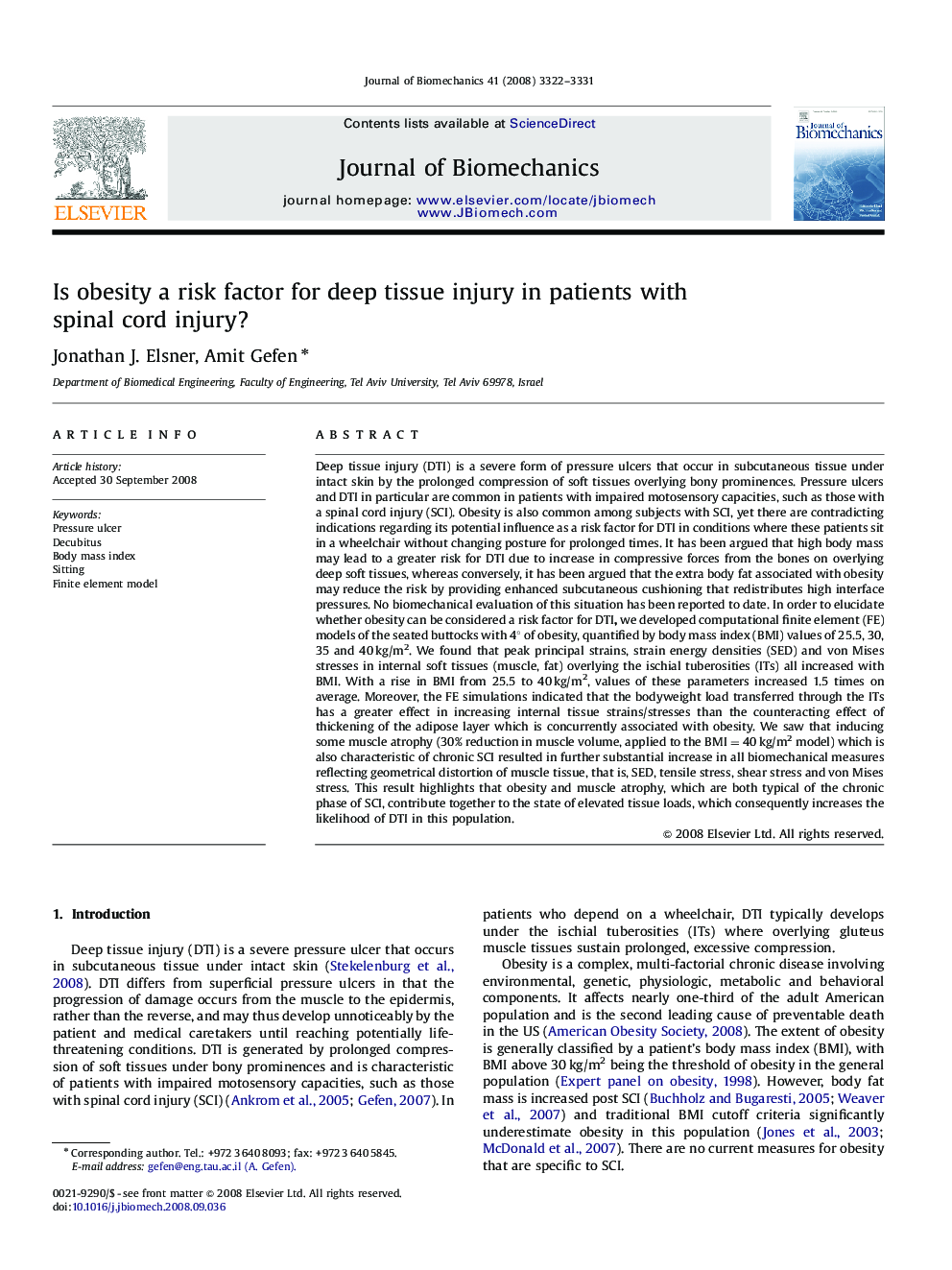| کد مقاله | کد نشریه | سال انتشار | مقاله انگلیسی | نسخه تمام متن |
|---|---|---|---|---|
| 874708 | 910347 | 2008 | 10 صفحه PDF | دانلود رایگان |

Deep tissue injury (DTI) is a severe form of pressure ulcers that occur in subcutaneous tissue under intact skin by the prolonged compression of soft tissues overlying bony prominences. Pressure ulcers and DTI in particular are common in patients with impaired motosensory capacities, such as those with a spinal cord injury (SCI). Obesity is also common among subjects with SCI, yet there are contradicting indications regarding its potential influence as a risk factor for DTI in conditions where these patients sit in a wheelchair without changing posture for prolonged times. It has been argued that high body mass may lead to a greater risk for DTI due to increase in compressive forces from the bones on overlying deep soft tissues, whereas conversely, it has been argued that the extra body fat associated with obesity may reduce the risk by providing enhanced subcutaneous cushioning that redistributes high interface pressures. No biomechanical evaluation of this situation has been reported to date. In order to elucidate whether obesity can be considered a risk factor for DTI, we developed computational finite element (FE) models of the seated buttocks with 4° of obesity, quantified by body mass index (BMI) values of 25.5, 30, 35 and 40 kg/m2. We found that peak principal strains, strain energy densities (SED) and von Mises stresses in internal soft tissues (muscle, fat) overlying the ischial tuberosities (ITs) all increased with BMI. With a rise in BMI from 25.5 to 40 kg/m2, values of these parameters increased 1.5 times on average. Moreover, the FE simulations indicated that the bodyweight load transferred through the ITs has a greater effect in increasing internal tissue strains/stresses than the counteracting effect of thickening of the adipose layer which is concurrently associated with obesity. We saw that inducing some muscle atrophy (30% reduction in muscle volume, applied to the BMI=40 kg/m2 model) which is also characteristic of chronic SCI resulted in further substantial increase in all biomechanical measures reflecting geometrical distortion of muscle tissue, that is, SED, tensile stress, shear stress and von Mises stress. This result highlights that obesity and muscle atrophy, which are both typical of the chronic phase of SCI, contribute together to the state of elevated tissue loads, which consequently increases the likelihood of DTI in this population.
Journal: Journal of Biomechanics - Volume 41, Issue 16, 5 December 2008, Pages 3322–3331